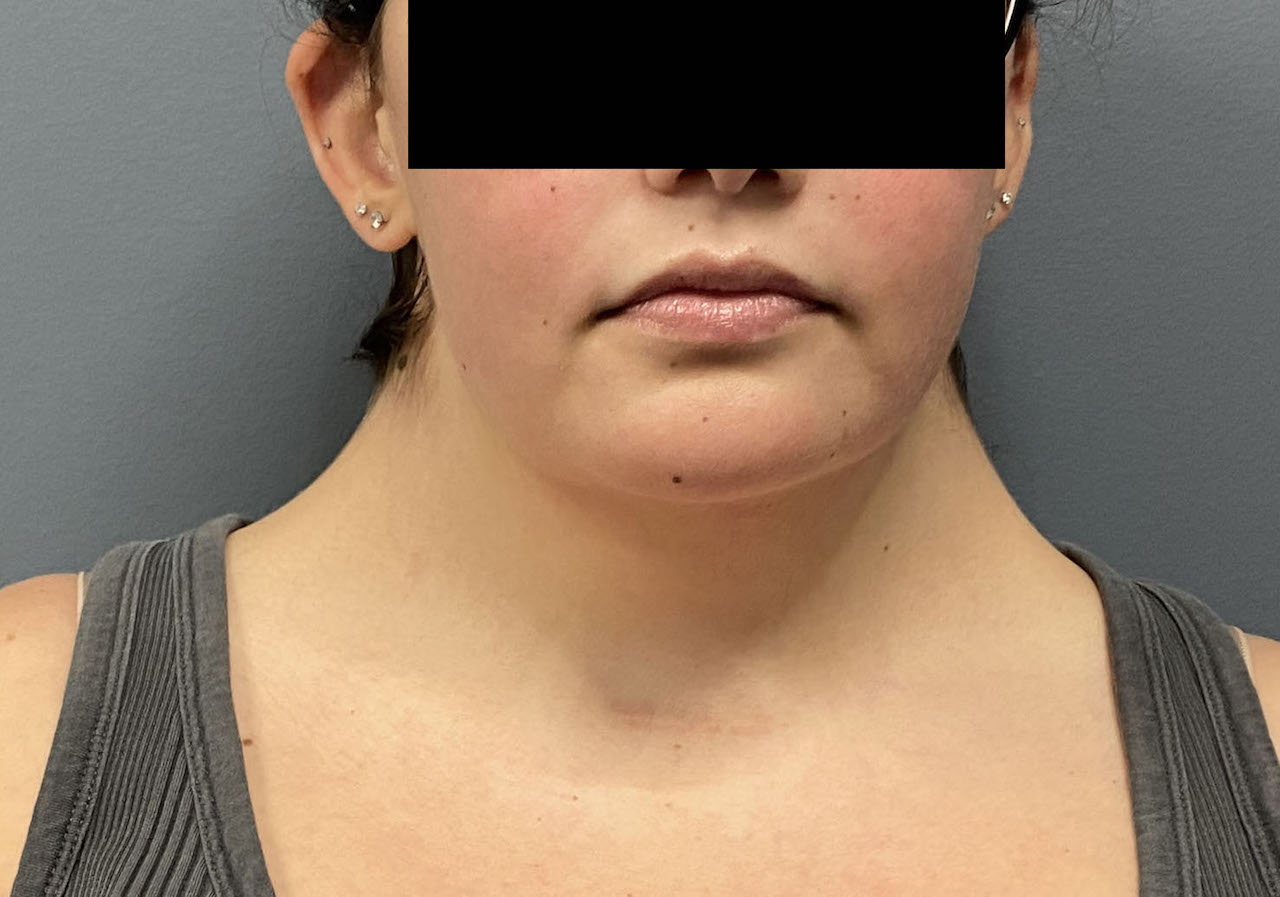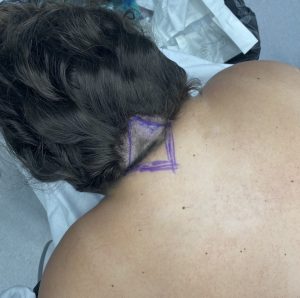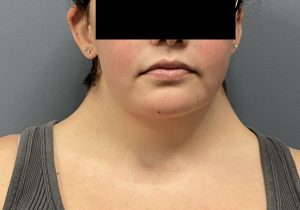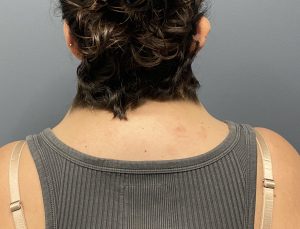Background: While neck webbing occurs in a number of congenital syndromes, and occasionally in non-syndromes as well, they are most common associated with Turner’s syndrome. They may also appear most significant in Turner’s where they are fully expressed. While the exact reason why neck webs occur is not precisely known their anatomic makeup is better understood. They are most commonly described as skin folds which make the neck look shorter and wider. Less frequently mentioned is that the trapezius muscle has a wider lateral position.
While neck webs may all appear somewhat similar that is only so when seen in how they appear in the frontal view. While all neck webs are largely composed of skin they have different degrees of thickness and tension. Some neck webs are thin and have highly mobile skin while others are more stiff and thicker. Some necks webs are longer or shorter than others and create differing degrees of neck-shoulder angles.
The tissue characteristics of the neck webs plays a factor into the success of their correction with the indirect posterior technique. Rather than place very visible scars along the web directly with tissue transposition flaps, which has always seemed like a poor aesthetic tradeoff, I use an indirect technique where there is final single vertical midline scar in the back of the neck, half of which ends up in the low hair bearing scalp. It treats the webs by drawing them posteriorly towards the midline of the neck. How successful it is depends on the skin flap mobility of the web which is influenced by its thickness as well as that of that of the surrounding tissues.
Case Study: This female with Turner’s syndrome presented for webbed neck surgery. She had a short thicker neck with a buffalo hump deformity on the upper back/lower posterior neck. In the upright position she had little neck web mobility. Pinching skin on the back of the neck moved the webs inward only slightly.
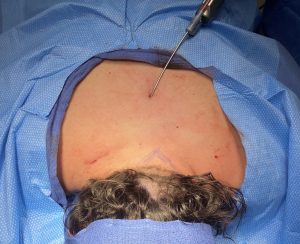

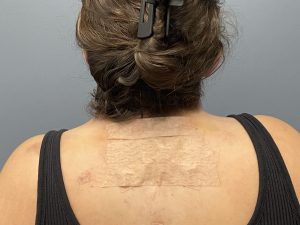
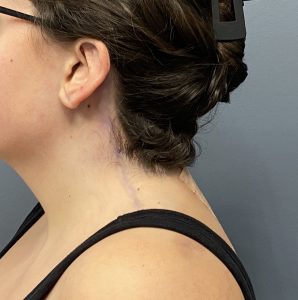
This case of webbed neck correction illustrates two technical points. First in the thicker neck patient liposuction is useful to decompress the neck tissues to allow for increased skin flap mobility. By thinning out the upper back tissues it also prevents a secondary buffalo hump when the neck tissues above it are moved inward. In this case liposuction was used because there was a pre-existing buffalo hump. But the very thick neck webs were also thinned out. Second, the posterior excisional approach, while indirect, keeps the scar largely hidden in the low hairline for most of it. So even if some of the result is lost with time due to tissue relaxation a bigger problem (scars along the webs) is avoided and secondary tightening can always be performed without increased scar risk.
Case Highlights:
1) The congenital webbed neck is primarily due to wide spacing of the trapezius muscle and the overlying skin…but is exacerbated by a short neck and a thick fatty layer around the shoulders and upper back.
2) Liposuction is a useful additive technique in the treatment of the webbed neck correction by thinning out the neck webs and upper back which permits greater tissue mobilization in the correction.
3)The indirect posterior diamond excision technique fundamentally works by placing the scar location in a more acceptable midline posterior neck location than along the sides of the neck webs.
Dr. Barry Eppley
Indianapolis, Indiana

